Introduction
Migrating to Magento 2 offers e-commerce businesses a multitude of benefits in today's rapidly evolving digital marketplace. This robust platform delivers superior performance, scalability, and security, meeting the demands for a seamless online shopping experience. Magento 2's advanced SEO features and mobile-responsive designs enhance visibility and engage a broader audience.
Its streamlined checkout process reduces cart abandonment rates and elevates conversion rates. The compatibility with third-party extensions empowers businesses to tailor their website's capabilities to meet current and future needs. Security is also a priority, making Magento 2 a reliable choice.
To ensure a successful upgrade, professional Magento upgrade services can navigate the process seamlessly, manage data migration, and offer valuable recommendations. Preparation involves conducting a meticulous audit of the existing site and establishing a staging environment for testing and refinement. Best practices include comprehensive content audits, forming internal migration teams, and thorough testing.
Extensive testing in a controlled environment ensures a smooth transition, and live deployment should be scheduled during periods of reduced traffic. Communication with customers is key to minimizing downtime and maintaining a seamless shopping experience. Troubleshooting and post-upgrade support are crucial to address any unexpected issues and ensure the smooth operation of the Magento store.
By taking a proactive stance on maintenance and regular content audits, businesses can optimize their online presence and meet customer expectations.
Why Upgrade to Magento 2?
Moving to a new version of the popular e-commerce platform offers numerous advantages for businesses looking to remain competitive in a constantly changing digital market. This robust platform is engineered to deliver superior performance, scalability, and security, directly addressing the increasing demands for a seamless online shopping experience. With its advanced SEO features and mobile-friendly designs, the second version of the software is a powerful tool for improving visibility and attracting a wider audience.
What truly sets the second version apart is its streamlined checkout process, which simplifies transactions and reduces cart abandonment rates, thereby elevating conversion rates and online revenue. Efficient and user-friendly systems like Magento 2 are essential for growth, as evidenced by the projected growth of the global B2B eCommerce market at a CAGR of 20.2% from 2023 to 2030, substantiating these improvements are not just theoretical.
Furthermore, the compatibility of the eCommerce platform with a wide range of third-party extensions and technologies enables businesses to expand the capabilities of their website, providing customized solutions to fulfill both present and future requirements. This flexibility is critical, as evidenced by organizations like the Ford Foundation, which faced challenges with a CMS that could not keep up with the content demands of a dynamic institution, emphasizing the need for adaptable and scalable digital solutions.
Additionally, businesses must remain vigilant in the face of cyber threats, as illustrated by OracleCMS's incident that necessitated comprehensive investigations and client support measures. A strong online shopping platform like Magento 2, which emphasizes the importance of security, can provide confidence against such vulnerabilities.
For directors in the online retail industry considering an enhancement or looking to optimize their existing platform, the benefits are evident. The second version of the e-commerce platform not only promotes business growth through its advanced features but also allows for efficient scaling and security, positioning businesses to thrive in the competitive online landscape.
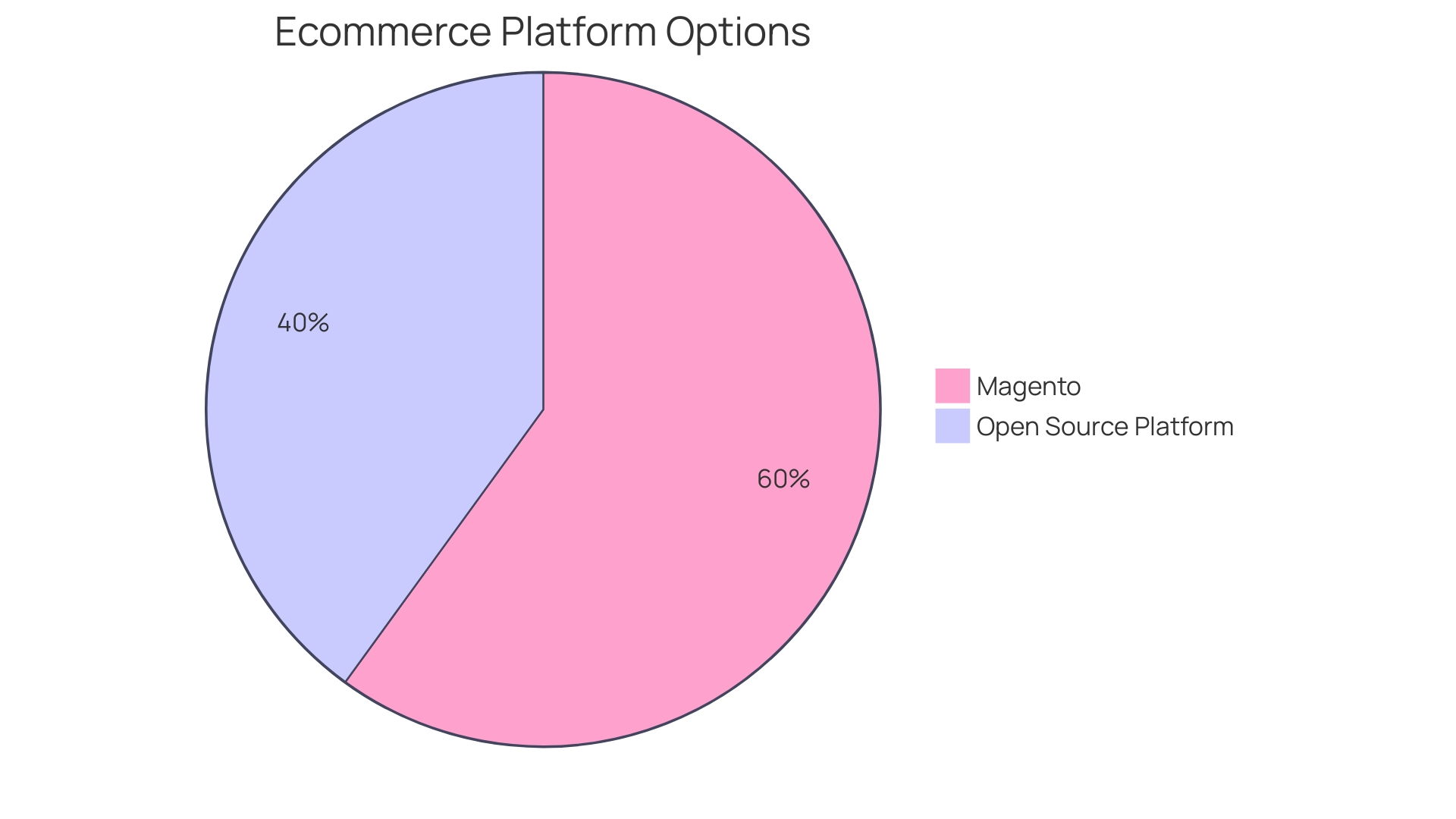
Key Benefits of Professional Magento Upgrade Services
Looking for expert services to enhance the performance and customer experience of e-commerce directors' online store can make a significant difference. These specialized service providers bring a wealth of expertise and abilities to smoothly navigate the process seamlessly, particularly when transitioning to the latest version of the platform.
One of the critical advantages of leveraging professional services is their capability to manage intricate tasks such as data migration, ensuring that all vital information is transferred accurately and securely. They are well-versed in resolving compatibility issues that may arise with new versions, as well as tailoring customization to meet specific business requirements.
Furthermore, professionals in enhancing the Magento platform can provide valuable suggestions on the most appropriate add-ons and templates that align with your business objectives and the upgraded system's capabilities. This strategic guidance is essential as it can influence the functionality and aesthetic appeal of your online store.
By collaborating with experts, business leaders can concentrate on their fundamental operational tasks, being assured that the enhancement is managed effectively. This approach not only saves time but also significantly reduces the likelihood of costly errors or website downtime, which can tarnish the customer experience and affect sales.
In general, investing in professional upgrade services for the Magento platform is a prudent decision for those looking to streamline their upgrade process, enhance website performance, and secure a competitive edge in the bustling world of online business.
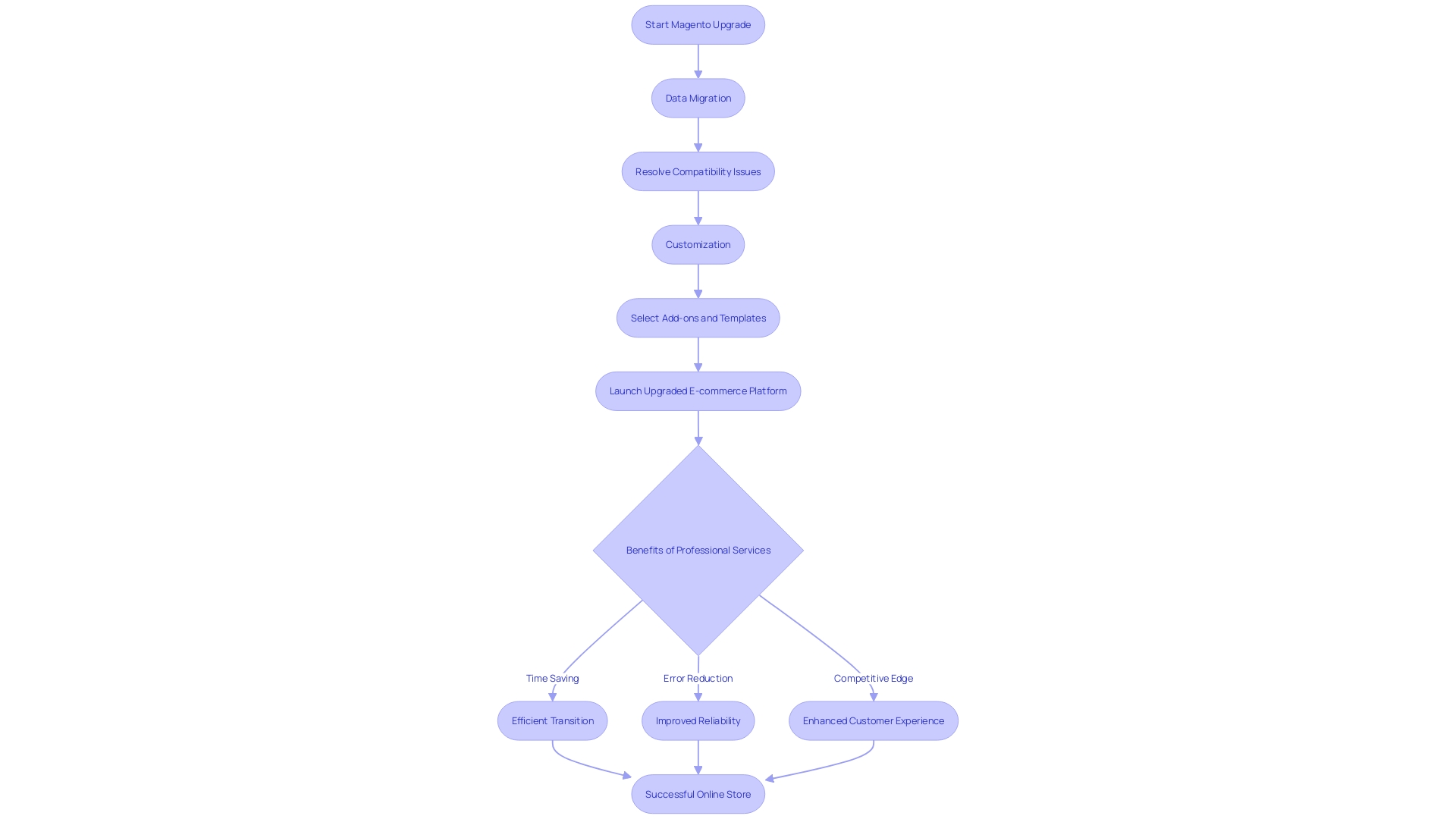
Preparation for Magento Upgrade
As you get ready to improve your e-commerce site, it's essential to carry out a thorough review of your current website. This audit should focus on identifying the elements of your site that are indispensable, as well as those that are superfluous or outdated. Rely on analytics to guide your decisions, with particular attention to page views, the validity of the content, and user engagement.
This process is not merely about identifying what to carry over to Magento 2, but also about determining what can be left behind. For example, evaluate the compatibility of your current themes and extensions with the new version, and be ready to make tough decisions about what to keep. The goal is to streamline your platform, not just transfer existing clutter to a new environment.
Furthermore, it is crucial to meticulously backup your data and create a staging environment to protect your operations during the enhancement. This controlled setting will allow you to test and refine the update before going live.
During this transition, clear communication is key. Make sure your team is fully informed about the plan, and keep your customers updated to manage their expectations regarding any possible downtime.
By implementing this strategic approach to your e-commerce platform upgrade, you'll be better positioned to not only enhance your site's performance but also to provide a more engaging and relevant experience for your customers. This is particularly crucial in the competitive online trading landscape, estimated to experience significant growth in the upcoming years, with the global B2B eCommerce market predicted to expand at a CAGR of 20.2% from 2023 to 2030.
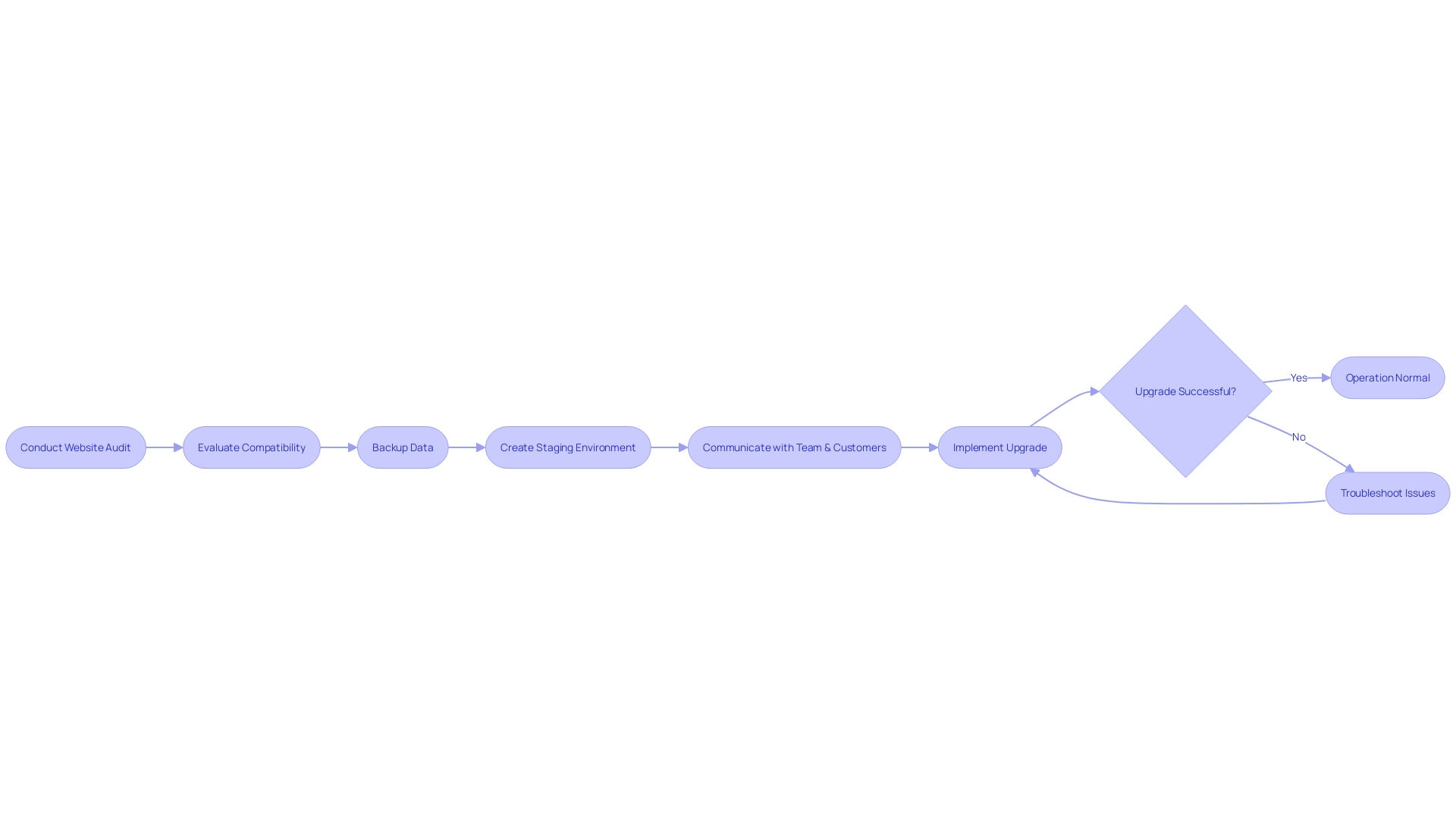
Best Practices for a Successful Magento Upgrade
Moving to Magento 2 is a crucial move for any online selling platform, demanding a careful strategy to guarantee a smooth shift and to take advantage of the platform's new capabilities. To achieve a successful improvement, it's crucial to start with a comprehensive content audit. This audit should focus on evaluating what content is essential and what can be discarded, using data-driven insights based on analytics such as page views and user engagement.
A website migration is more than just a technical exercise; it encompasses a strategic reassessment of your e-commerce operations. Form an internal migration team with representatives from different departments to ensure a holistic approach, covering everything from content governance to the training of staff in new operational procedures.
Testing is another critical component. A comprehensive test coverage of your application enables a smoother process of enhancing the system by reducing the need for manual testing and guaranteeing that any modifications fulfill the essential criteria. Automated tests, especially, are priceless, as they greatly diminish the workload and potential back-and-forth communication during the process of enhancement.
Keep in mind the importance of project planning, including the establishment of a detailed timeline that incorporates critical aspects like data migration and theme customization. Furthermore, considering the average e-commerce conversion rates can help set benchmarks for post-upgrade performance evaluation.
By implementing these practices, you'll be better prepared to work together with a professional service provider for enhancing your e-commerce platform, handle technical difficulties efficiently, and guarantee that your team is fully skilled to make use of the new features provided by the latest version of the software.
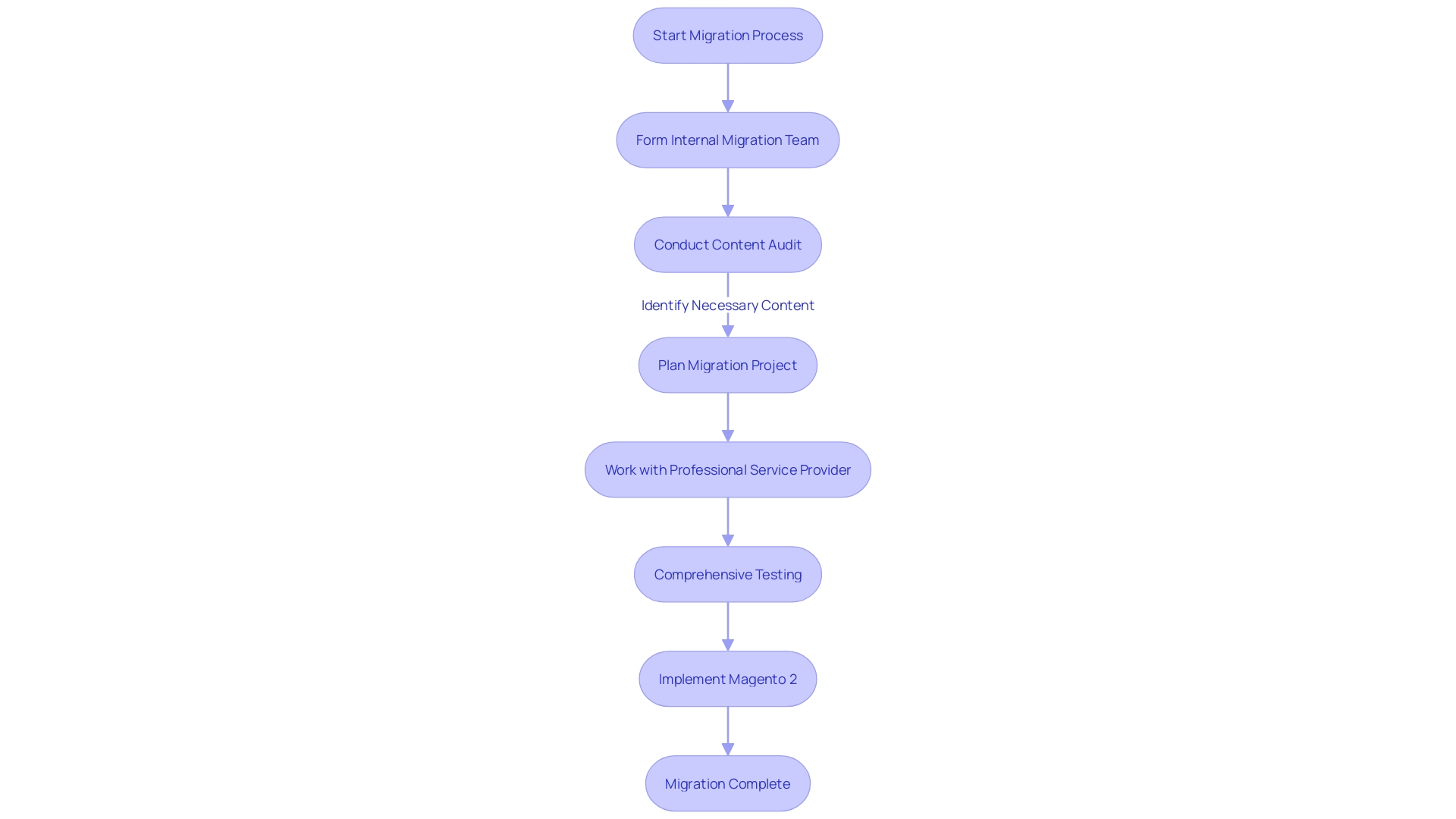
Testing and Deployment Strategies
Ensuring that a Magento update unfolds without negatively impacting the user experience requires a foundational strategy that incorporates extensive testing measures. The process of enhancing should start in a controlled staging environment, which mirrors the live site but is not accessible to the public. Here, you can perform thorough testing on all elements impacted by the enhancement, including themes, custom code, and third-party extensions. Critical components such as product pages, checkout workflows, and payment gateways need meticulous functional testing to confirm that they operate seamlessly post-upgrade.
Moreover, regression testing is indispensable to ensure that the new version does not disrupt existing functionalities. This requires a comprehensive analysis of the application to identify any potential mistakes caused by the enhancement. By leveraging regression testing, you can safeguard the integrity of features that your customers rely on, thereby maintaining a consistent user experience.
To further validate the upgrade's success, consider employing A/B testing. This method allows you to compare the performance of the upgraded version against the old one, providing insights into user engagement and system efficiency. This comparison can guide optimizations before the full-scale launch.
Once testing confirms that the system is strong and prepared, it is wise to schedule the live deployment during a period of reduced traffic. By doing so, you minimize the potential for customer inconvenience should unforeseen issues arise. As reinforced by the release of version 8.1.2, which addressed key security and functionality bugs, timely updates and meticulous testing are central to maintaining a secure and reliable e-commerce presence. Remember, if unexpected complications arise that don't stem from third-party modules or customizations, it's crucial to report these findings promptly to ensure the stability and performance of your e-commerce platform.
Minimizing Downtime and Ensuring Smooth Transition
Ensuring a seamless Magento enhancement is crucial for maintaining an uninterrupted online shopping experience. To facilitate this, it's advisable to:
- Opt for off-hours scheduling of the upgrade to lessen the impact on site traffic.
- Utilize a maintenance notification to keep visitors informed about the site's temporary status. Initiate communication with customers about the enhancement, providing alternative channels such as social media or email for product access. Vigilantly observe the enhancement, prepared to promptly handle any emerging problems. Maintain open lines of communication with your team, keeping them informed about the progress of the update.
The achievement of an enhancement depends on a careful approach, similar to a content audit, where informed decisions about necessary content are based on analytics. This strategic perspective is echoed in the martech stack audit during Drupal 9's end-of-life, which emphasized aligning technologies with business goals and enhancing user satisfaction for a more robust ROI.
A website migration or eCommerce replatforming is not simply a transfer of data but an opportunity to refine the overall business strategy. This includes leveraging fresh technologies to improve customer experience, as seen in the creation of a new video accessibility plugin for the WordPress community by the Ford Foundation.
As highlighted by the proactive strategies of the Ford Foundation and IFCO, who partnered with Rackspace for expertise in cloud transitions, it's evident that choosing the right partners and preparing for technical transitions are key for growth and innovation. Such partnerships underscore the importance of customer-centric approaches and the insights gained from a thorough technical audit, like the one conducted by Motion, which frames the end-of-life events as a chance for progress and embracing new Drupal features.
Data emphasizes the need for extensive test coverage to ensure smooth updates. Automated tests decrease the need for manual testing, which in turn reduces the back-and-forth between engineers, ensuring that updates fix the appropriate problems without introducing new ones.
Finally, website downtime can have significant repercussions, including tarnished brand reputation and financial loss. Understanding the critical role of hosting infrastructure and server requirements can greatly influence a site's stability and uptime, safeguarding against costly downtime.
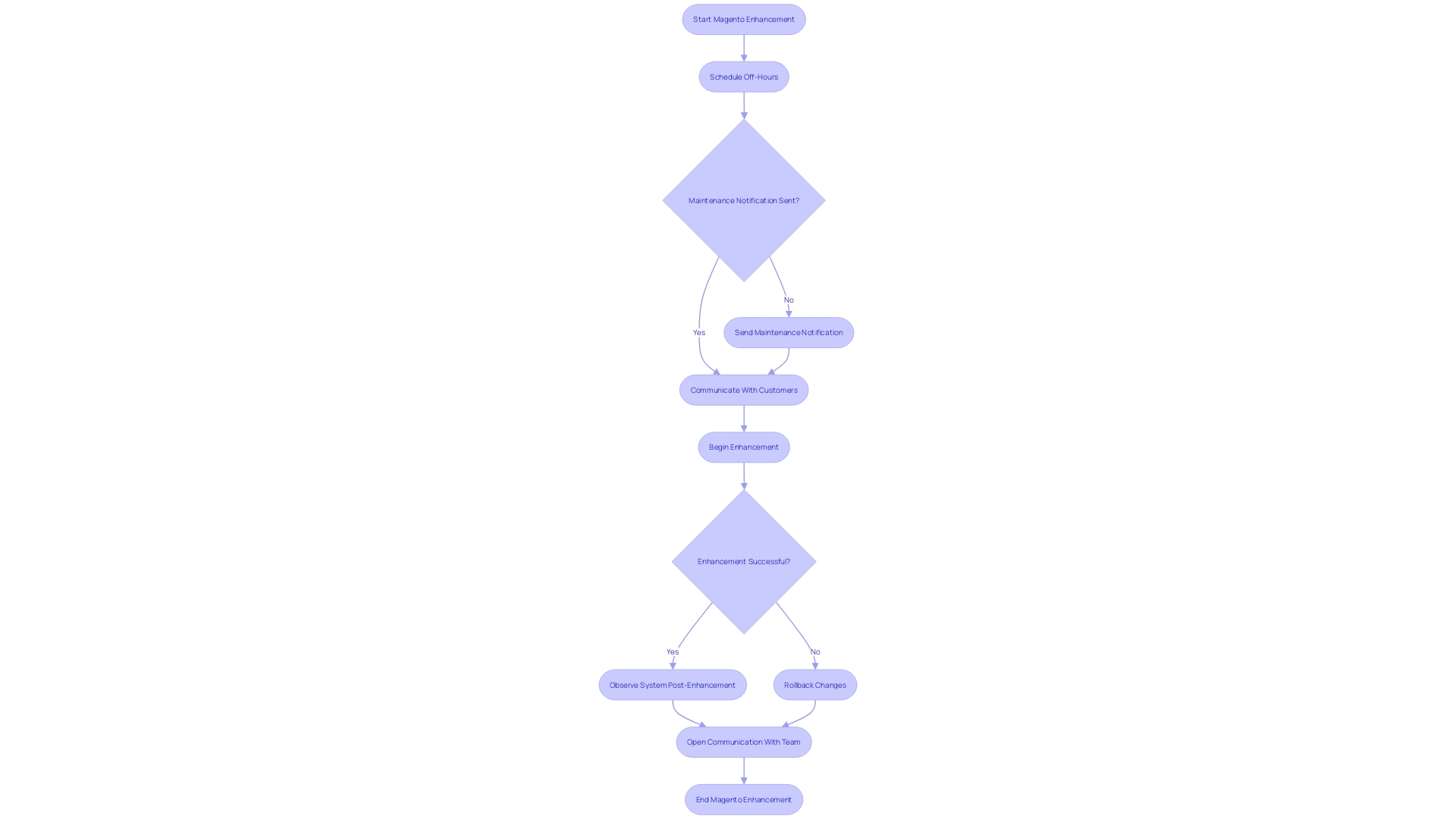
Troubleshooting and Post-Upgrade Support
Ensuring the seamless functioning of your store after the process of enhancing is equally essential as the enhancing process itself. A robust support system is indispensable for addressing unexpected issues that may arise, safeguarding the functionality and user experience of your e-commerce platform. It's crucial to collaborate with a seasoned service provider for platform upgrades to devise a comprehensive post-upgrade support scheme, which encompasses technical support, troubleshooting compatibility issues, and educating your team about the new features and operations of the updated system. As highlighted by recent updates in Magento version 8.1.7, responsiveness and efficiency in product management are continually being enhanced, reinforcing the need for regular website monitoring to capitalize on these improvements. Furthermore, the wisdom of conducting content audits, as underscored by insights from enterprise brands using WordPress, suggests that a regular review of your website's content and functionality is vital. This approach not only helps in decluttering your site but also ensures that your most valuable pages receive the attention they deserve from search engines, thus enhancing your site's visibility and performance. By taking a proactive stance on maintenance, akin to the meticulous upkeep of a vehicle, you can preempt potential challenges, thereby maintaining an optimal online presence that meets the expectations of both your team and customers.
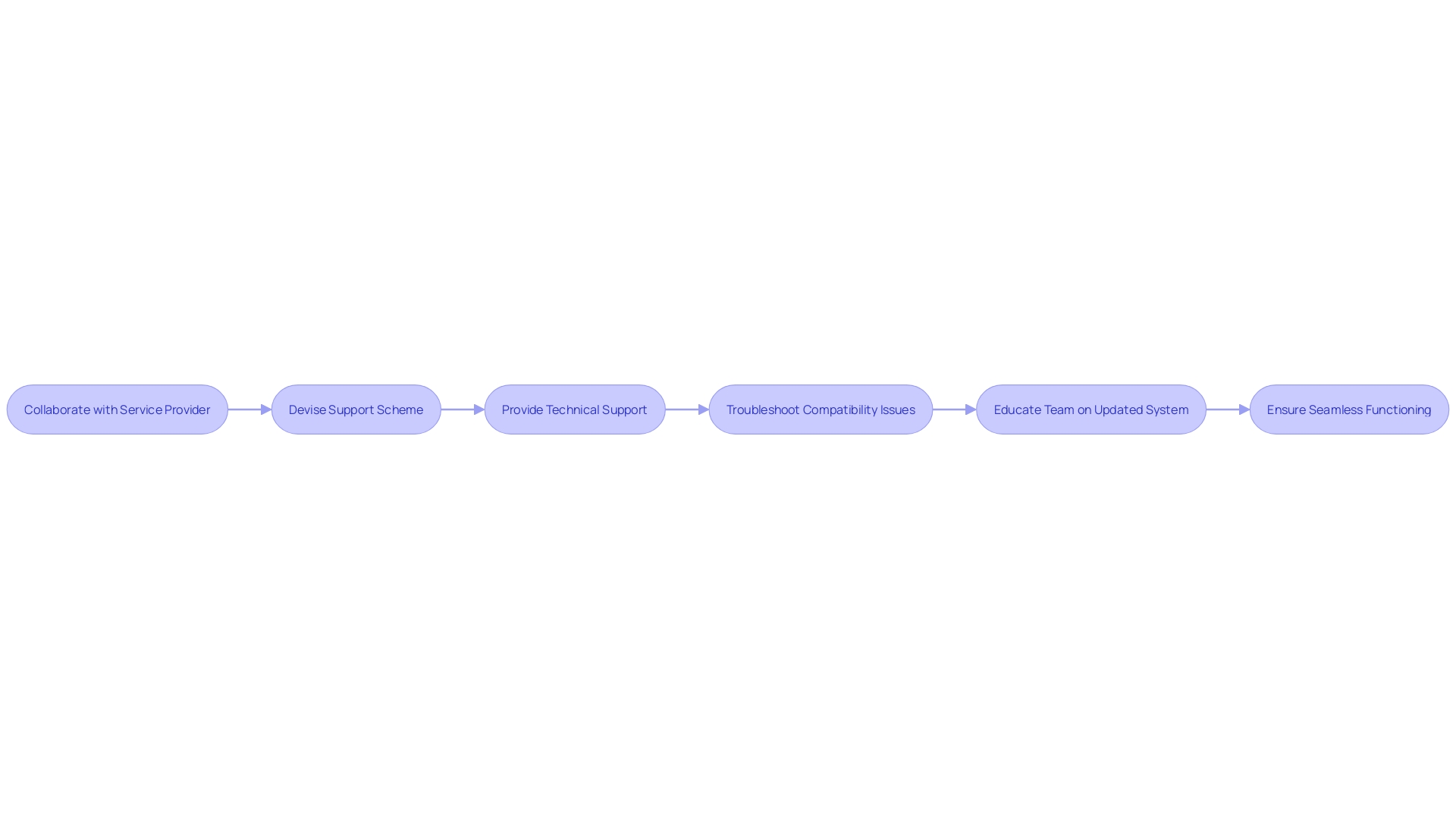
Conclusion
In conclusion, migrating to Magento 2 offers numerous benefits for e-commerce businesses in today's digital marketplace. It provides superior performance, scalability, and security, meeting the demands for a seamless online shopping experience. Magento 2's advanced SEO features and mobile-responsive designs enhance visibility and engage a broader audience.
The streamlined checkout process reduces cart abandonment rates and elevates conversion rates. Compatibility with third-party extensions empowers businesses to tailor their website's capabilities to meet current and future needs. Security is also a priority, making Magento 2 a reliable choice.
To ensure a successful upgrade, professional Magento upgrade services are recommended. These services can navigate the process seamlessly, manage data migration, and offer valuable recommendations. Preparation involves conducting a meticulous audit of the existing site and establishing a staging environment for testing and refinement.
Best practices include comprehensive content audits, forming internal migration teams, and thorough testing. Extensive testing in a controlled environment ensures a smooth transition, and live deployment should be scheduled during periods of reduced traffic. Communication with customers is key to minimizing downtime and maintaining a seamless shopping experience.
Troubleshooting and post-upgrade support are crucial to address any unexpected issues and ensure the smooth operation of the Magento store. By taking a proactive stance on maintenance and regular content audits, businesses can optimize their online presence and meet customer expectations. Overall, leveraging professional Magento upgrade services, following best practices, and prioritizing testing and post-upgrade support will help businesses maximize the benefits of migrating to Magento 2 and thrive in the competitive e-commerce landscape.





